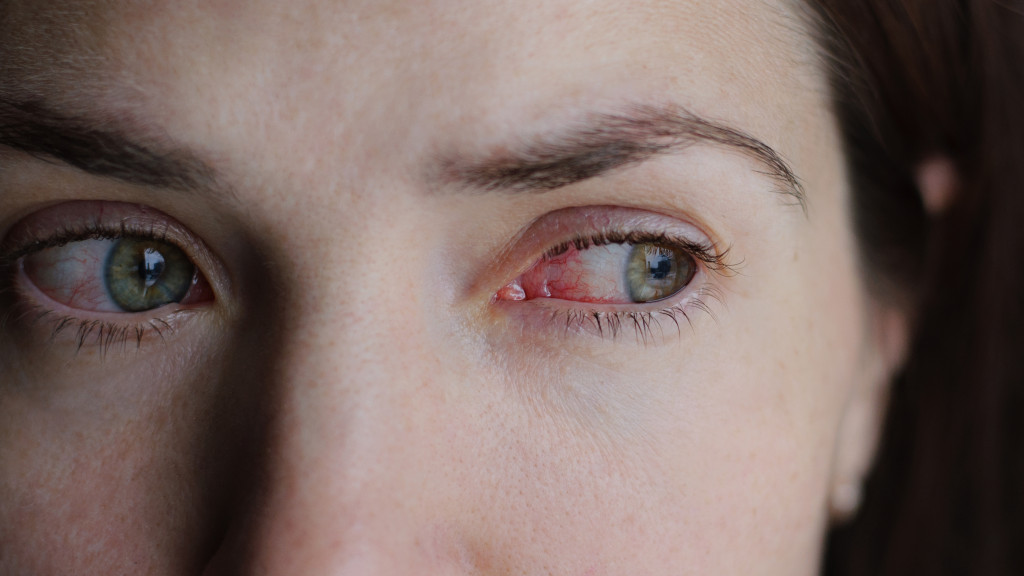- Conjunctivitis is an eye infection that allergies and conditions can cause.
- Redness and eye discharge are common symptoms of this condition.
- It’s essential to see the doctor once you notice any eye symptoms.
- Itching and sensitivity to light can also indicate pink eye.
- Risk factors of conjunctivitis include viral infection and allergies.
Conjunctivitis, also known as pink eye, is a common eye infection that affects millions of people every year. It can be caused by various factors such as bacteria, viruses, allergies, and chemical irritants. Conjunctivitis can be highly contagious and easily spread from one person to another through close contact.
This article will discuss the causes, symptoms, and when to see the doctor if you suspect that you have conjunctivitis. Hopefully, by the end of this post, you will better understand this eye infection and how to manage it effectively.
Causes of Conjunctivitis
Several factors, including bacterial or viral infections, allergies, and chemical irritants, can cause conjunctivitis. Bacterial conjunctivitis is usually caused by a type of bacteria called Staphylococcus aureus. Viral conjunctivitis, on the other hand, is caused by a virus that can vary depending on the specific type of conjunctivitis.
Allergic conjunctivitis occurs when the body’s immune system reacts to an allergen such as dust, pollen, or pet dander. Chemical conjunctivitis is caused by exposure to chemical irritants such as chlorine in swimming pools or air pollution. It’s important to note that conjunctivitis can be highly contagious, and taking precautions to prevent it from spreading to others is essential.
Symptoms of Conjunctivitis
You look in the mirror and see that your eyes are red, and there’s a sticky discharge coming out of both eyes. If you are experiencing such symptoms, you are likely to have conjunctivitis, also known as pink eye. Conjunctivitis is a common eye infection that affects people of all ages. It is caused by the inflammation of the thin, clear tissue that lies over the white part of your eye and inside your eyelids, called the conjunctiva.
Redness
The most common symptom of conjunctivitis is redness of the affected eye. Your eye may look bloodshot and swollen. This happens because the tiny blood vessels in the conjunctiva become inflamed and dilated. The redness can range from mild to severe, affecting one or both eyes.
Discharge
Another symptom of conjunctivitis is the discharge from the infected eye. The discharge can be watery or thick and mucus-like, depending on the type of conjunctivitis. If a virus causes the infection, the discharge may be light. If bacteria cause it, the discharge may be thick, yellow, or greenish.
Itching

Conjunctivitis can make your eyes feel itchy and irritated. This is because the inflammation causes the conjunctiva to become sensitive to allergens such as dust, pollen, and pet dander, making you want to rub your eyes. However, rubbing your eyes can worsen the infection and spread it to other parts of your eye, so try to resist the urge.
Sensitivity to light
If you have conjunctivitis, you may find that your eyes become more sensitive to light than usual. This is because the inflammation in your eyes can affect the surface of your eye, making it more challenging to filter out bright light. Wearing sunglasses or staying out of bright light can help ease this symptom until the infection clears.
When to See the Doctor

If you are experiencing conjunctivitis symptoms, it’s essential to see a professional eye doctor Your doctor will be able to determine the cause of your infection and recommend the appropriate course of treatment.
If you have bacterial or viral conjunctivitis, you may be prescribed an antibiotic or antiviral medication. Allergic conjunctivitis can be treated with antihistamines or steroid eye drops. Sometimes, your doctor may recommend a cold compress and artificial tears to help relieve your symptoms.
Risk Factors
While anyone can develop conjunctivitis, certain factors increase the risk of catching the infection. Here are some of the most common risk factors of conjunctivitis and how to manage them effectively.
Viral and Bacterial Infections
Conjunctivitis is often caused by viral or bacterial infections such as the common cold, flu, or sinus infection. People with close contact with infected individuals are more likely to develop conjunctivitis. Proper eye hygiene, such as washing hands frequently and avoiding touching the eyes, can help reduce the risk of infection.
Allergies
An allergic reaction to substances such as pollen, dust, and pet dander causes allergic conjunctivitis. People with a history of allergies are at a higher risk of developing conjunctivitis. Identifying and avoiding the allergen is an effective way to manage and reduce the risk of allergic conjunctivitis.
Final Thoughts
In conclusion, conjunctivitis is a common eye infection that various factors can cause. If you suspect that you have conjunctivitis, you must see a doctor to determine the cause and appropriate treatment.
Taking preventative measures such as washing your hands frequently, avoiding touching your eyes, and using protective eyewear can also help prevent the spread of conjunctivitis. Always take care of your eyes and seek medical attention if you experience any concerning symptoms.

